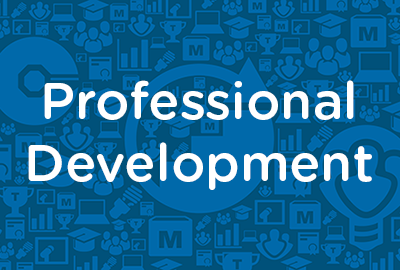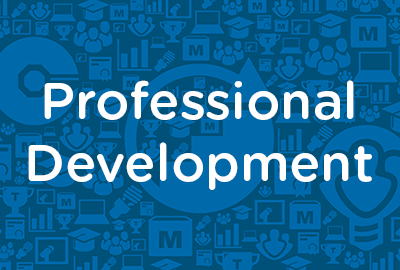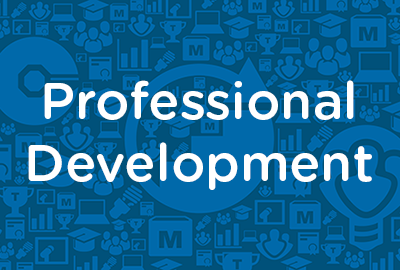 |
Course 35: Observing Children in School-Age Programs |
2.00 |
Conducting and documenting objective, accurate observations of children in OST programs is an important professional responsibility of OST professionals. Two useful tools for structuring observations are 1) Developmental Checklists and 2) Anecdotal Records. Both tools provide rich information that help staff learn about children’s development. When OST staff conduct regular observations of children’s development and prepare objective documentation of these observations, they are able to discover the uniqueness of each child and provide developmentally appropriate guidance and support for all children in the program. |
 |
Observing Children in School-Age Programs |
2.00 |
Conducting and documenting objective, accurate observations of children in school-age programs is an important professional responsibility of school-age care professionals. Two useful tools for structuring observations are developmental checklists and anecdotal records. Both tools provide rich information that help staff learn about children’s development. When school-age care staff conduct regular observations of children’s development, and prepare objective documentation of these observations, they are able to discover the uniqueness of each child, and provide developmentally appropriate guidance and support for all children in the program. |
 |
Conflict and Communication: Why Can't We Be Friends? |
1.00 |
Conflict occurs when we are in relationship with others. In fact, the hallmark of a healthy relationship is not the absence of conflict, but the ability to successfully resolve it. Unfortunately, resolving conflict is not a skill many of us were taught. We'll explore the fundamental causes of conflict and the dynamics that can escalate conflict. Finally, we’ll cover the tools necessary to navigate conflict successfully, including effective communication strategies. |
 |
Interviewing Skills: Federal Laws |
0.67 |
Congress enacted the Americans with Disabilities Act (ADA) to provide a clear and comprehensive mandate to eliminate discrimination in employment against individuals with disabilities. This Act continues to have long-term benefits for American businesses, since it helps ensure that all workers have an opportunity to maximize their contributions to the productivity of the American economy.
The Immigration Reform and Control Act (IRCA) was signed into law in 1986 because of the large number of illegal aliens working in the United States. The purpose of the Act was to preserve jobs for those who are legally entitled to these, such as U.S. citizens and foreign nationals eligible to work in the United States. The Act is not a negative response to the diversification of the work force, but rather an acknowledgement of it, protecting the rights of both employer and candidate.
In this course you will learn to: define disability and identify the questions that are prohibited by the Americans with Disabilities Act, and hire employees legally under the Immigration Reform and Control Act and use Form I-9. |
 |
Interviewing Skills: Federal Laws (Instructor Guide) |
0.67 |
Congress enacted the Americans with Disabilities Act (ADA) to provide a clear and comprehensive mandate to eliminate discrimination in employment against individuals with disabilities. This Act continues to have long-term benefits for American businesses, since it helps ensure that all workers have an opportunity to maximize their contributions to the productivity of the American economy.
The Immigration Reform and Control Act (IRCA) was signed into law in 1986 because of the large number of illegal aliens working in the United States. The purpose of the Act was to preserve jobs for those who are legally entitled to these, such as U.S. citizens and foreign nationals eligible to work in the United States. The Act is not a negative response to the diversification of the work force, but rather an acknowledgement of it, protecting the rights of both employer and candidate.
In this course you will learn to: define disability and identify the questions that are prohibited by the Americans with Disabilities Act, and hire employees legally under the Immigration Reform and Control Act and use Form I-9.
This Instructor's Edition of this course includes notes and suggestions to assist you in presenting the material, whether in an in-person classroom setting, or as an instructor-led online or distance-learning course. It also provides you with the answers to questions found in mid-lesson activities, as well as in the quiz that concludes the course. |
 |
Generational Differences - Managing The Complexity |
1.00 |
Could dealing with people get any more difficult? Today’s business environment brings many challenges with four different generations working together for the first time. Communication, respect, recognition, retention, interaction with others, and work life balance mean something different to each generation. If not understood and managed effectively workplace conflict, poor communication, low morale, and high turnover can occur. Understand and discover the key values and contributions among these four generations. Each generation provides intrinsic value to an organization. You will learn how to capitalize on the strengths of the Traditionalists, the Baby Boomer’s, Generation X, or the Millennial Generation (Gen Y). By implementing effective strategies for communication, recognition, development, retention, and leadership you will uncover the hidden talents of each generation while minimizing the risk of knowledge transfer. You will learn the key generational differences and similarities in each of these areas. Join us as we share with you some of the many generational challenges in today’s work environment. |
 |
Building Upward—Primary Assessment |
1.00 |
Course Description: It is often said that experience is the best teacher. Dr. Jack Davidoff is an experienced EMS Medical Director. Paramedic Jason Haag is an experienced fire and EMS provider. The two of them share a few thoughts that prove to be an excellent review of what should and could be done during a standard primary assessment and more. Final Exam: A score of 80% or higher is required to obtain your certificate. You have two attempts to pass this multiple-choice exam. Please take your time to carefully answer each question. |
 |
Developing Your Professional Philosophy Statement (CDA 6) |
2.00 |
Crafting a professional philosophy statement offers you a powerful avenue to express your core beliefs and values in early childhood education, teaching, and learning. This valuable tool can serve you throughout your career, from job applications to pursuing certifications like the CDA (Child Development Associate) Credential or academic positions. Additionally, it acts as a personal compass, reaffirming the significant roles and responsibilities you wish to fulfill as an educator. |
 |
Developing High Quality Inclusion Practices (CDA 8) |
2.00 |
Creating high-quality inclusive programs empowers children with disabilities to learn and thrive alongside their typically developing peers. However, knowledge and skill gaps often hinder educators in implementing effective inclusion practices. This session dives into the essence of inclusion in early childhood settings, fostering awareness and equipping you to start the inclusion conversation. Explore the core principles and best practices to cultivate truly inclusive learning environments for all children. |
 |
Creativity and Innovation: Creativity In Organizations |
1.34 |
Creativity in an organization depends on various factors, such as the distribution of authority, the flow of information, and the culture. Some organizations encourage creative thinking to a large extent, and others discourage it. You can recognize a creative organization from its leaders. A leader who can influence a team and inspire them to work creatively builds a creative workforce. Such teams look at problem solving as a means to develop creativity. Although there are certain organizational situations that can enhance creativity, you should also be aware of the organizational factors and job conditions that can inhibit your creativity.
In this course you will learn to: develop creativity in an organization, and use creativity to generate ideas and solve problems. |
 |
Creativity and Innovation: Creativity In Organizations (Instructor Guide) |
1.34 |
Creativity in an organization depends on various factors, such as the distribution of authority, the flow of information, and the culture. Some organizations encourage creative thinking to a large extent, and others discourage it. You can recognize a creative organization from its leaders. A leader who can influence a team and inspire them to work creatively builds a creative workforce. Such teams look at problem solving as a means to develop creativity. Although there are certain organizational situations that can enhance creativity, you should also be aware of the organizational factors and job conditions that can inhibit your creativity.
In this course you will learn to: develop creativity in an organization, and use creativity to generate ideas and solve problems.
This Instructor's Edition of this course includes notes and suggestions to assist you in presenting the material, whether in an in-person classroom setting, or as an instructor-led online or distance-learning course. It also provides you with the answers to questions found in mid-lesson activities, as well as in the quiz that concludes the course. |
 |
Creativity and Innovation: Personal Creativity (Instructor Guide) |
1.34 |
Creativity is often considered a talent that some people have. Actually, creativity's a skill that everyone can nurture through exercise and practice. You can prepare yourself both mentally and physically to be creative.
In this course you will learn to: prepare yourself mentally and physically to be creative, and use your experiences, innocence, intuition, and sense of adventure to increase your creativity.
This Instructor's Edition of this course includes notes and suggestions to assist you in presenting the material, whether in an in-person classroom setting, or as an instructor-led online or distance-learning course. It also provides you with the answers to questions found in mid-lesson activities, as well as in the quiz that concludes the course. |
 |
Creativity and Innovation: Personal Creativity |
1.34 |
Creativity is often considered a talent that some people have. Actually, creativity's a skill that everyone can nurture through exercise and practice. You can prepare yourself both mentally and physically to be creative.
In this course you will learn to: prepare yourself mentally and physically to be creative, and use your experiences, innocence, intuition, and sense of adventure to increase your creativity. |
 |
Creativity and Innovation: Creative Thinking Basics (Instructor Guide) |
1.34 |
Creativity is the ability to imagine new concepts or combine existing ideas in new and different ways. An old idea that was not applicable in the past might become practical if the factors that made it irrelevant have changed. These changes could be in the details of the idea, or in the situation in which it is to be applied.
Creativity is a key factor in personal development. There are certain traits that are evident in creative thinkers. To be creative, you need to differentiate between the traits that enhance your creativity, and those that inhibit it.
In this course you will: prepare yourself mentally and physically to be creative, use your experiences, innocence, intuition, and sense of adventure to increase your creativity.
This Instructor's Edition of this course includes notes and suggestions to assist you in presenting the material, whether in an in-person classroom setting, or as an instructor-led online or distance-learning course. It also provides you with the answers to questions found in mid-lesson activities, as well as in the quiz that concludes the course. |
 |
Creativity and Innovation: Creative Thinking Basics |
1.34 |
Creativity is the ability to imagine new concepts or combine existing ideas in new and different ways. An old idea that was not applicable in the past might become practical if the factors that made it irrelevant have changed. These changes could be in the details of the idea, or in the situation in which it is to be applied.
Creativity is a key factor in personal development. There are certain traits that are evident in creative thinkers. To be creative, you need to differentiate between the traits that enhance your creativity, and those that inhibit it.
In this course you will: prepare yourself mentally and physically to be creative, use your experiences, innocence, intuition, and sense of adventure to increase your creativity. |
 |
Creativity and Innovation: Fostering A Creative Environment |
1.00 |
Creativity is the ability to look at a situation from every possible angle and determine potential ideas, solutions, or outcomes. Employees with this ability add value to an organization by increasing its efficiency and productivity. This is why board members, stockholders, managers, and other employees want to recruit and retain creative individuals. Everyone in an organization benefits from the recruitment of creative people.
When a candidate begins to search for a job or becomes aware of available positions, the candidate will form an opinion about your company based on promotional material, media articles, stories, and word-of-mouth. Creative people look for flexibility. Although managers might hire creative people, some managers still tend to stifle employees’ creativity with excessive rules and directions. Creative candidates must believe that they will have the flexibility to be innovative, or they will look elsewhere for employment.
In this course you will learn to: recruit and retain creative individuals, and maintain a creative environment. |
 |
Creativity and Innovation: Fostering A Creative Environment (Instructor Guide) |
1.00 |
Creativity is the ability to look at a situation from every possible angle and determine potential ideas, solutions, or outcomes. Employees with this ability add value to an organization by increasing its efficiency and productivity. This is why board members, stockholders, managers, and other employees want to recruit and retain creative individuals. Everyone in an organization benefits from the recruitment of creative people.
When a candidate begins to search for a job or becomes aware of available positions, the candidate will form an opinion about your company based on promotional material, media articles, stories, and word-of-mouth. Creative people look for flexibility. Although managers might hire creative people, some managers still tend to stifle employees’ creativity with excessive rules and directions. Creative candidates must believe that they will have the flexibility to be innovative, or they will look elsewhere for employment.
In this course you will learn to: recruit and retain creative individuals, and maintain a creative environment.
This Instructor's Edition of this course includes notes and suggestions to assist you in presenting the material, whether in an in-person classroom setting, or as an instructor-led online or distance-learning course. It also provides you with the answers to questions found in mid-lesson activities, as well as in the quiz that concludes the course. |
 |
Critical Thinking and Decision-Making |
1.00 |
Critical thinking is an act in which you question, analyze, interpret, evaluate and make a judgment about what you read, hear, say, or write. Critical thinking helps you make better decisions on a daily basis. Learn strategies for solving everyday problems and making thoughtful, well-informed decisions. |
 |
Business Problem Solving: Critical Thinking and Information Analysis |
1.34 |
Critical thinking is the ability to understand how others think as well as how your own thinking process works. It also includes the ability to objectively evaluate the evidence used to support beliefs or arguments that lead to conclusions. It is an important business and problem-solving skill. Critical thinking helps you to evaluate various methods of reasoning that can be used in problem solving.
In this course you will learn to: use reasoning and logic to think critically, define and use quantitative analysis techniques, and define and use qualitative analysis techniques. |
 |
Business Problem Solving: Critical Thinking and Information Analysis (Instructor Guide) |
1.34 |
Critical thinking is the ability to understand how others think as well as how your own thinking process works. It also includes the ability to objectively evaluate the evidence used to support beliefs or arguments that lead to conclusions. It is an important business and problem-solving skill. Critical thinking helps you to evaluate various methods of reasoning that can be used in problem solving.
In this course you will learn to: use reasoning and logic to think critically, define and use quantitative analysis techniques, and define and use qualitative analysis techniques.
This Instructor's Edition of this course includes notes and suggestions to assist you in presenting the material, whether in an in-person classroom setting or as an instructor-led online or distance-learning course. It also provides you with the answers to questions found in mid-lesson activities, as well as in the quiz that concludes the course. |
 |
Construction Safety & Prevention Program: CSIP Introduction |
0.25 |
CSIP Introduction is part of a twelve-part construction safety and prevention program. This course introduces construction safety standards and preventing injury on the job. This course will also cover the structure of CSIP programs and OSHA considerations and rules. |
 |
Cultural Competence for Paraprofessionals |
0.75 |
Culture and cultural elements are essential components of people's identities. Understanding the cultural elements as paraprofessionals allows for a greater appreciation for students and can improve relationships. Cultural elements may include race and ethnicity, gender, and socio-economic status. These elements of culture are not separate from the larger cultural context in which we live and work, especially as paraprofessionals. It is important to recognize that many culturally and linguistically diverse families have specific customs and traditions that may not necessarily be connected to a particular cultural group. By understanding cultural competence, paraprofessionals can provide responsive instruction and support to students from all backgrounds. |
 |
Cross-Cultural Business Communication: Workplace Culture (Instructor Guide) |
1.00 |
Culture is a way of life established by a group of people and passed on to succeeding generations. People within a culture usually share common values, beliefs, and perspectives and have the same language and communication style. Although people within a culture must live in close proximity while the culture is being established, future generations frequently relocate to other countries or regions. This creates situations of cross-cultural exchanges.
As we become increasingly diverse, there is a growing demand for cross‑cultural communication in the workplace. Technology allows us to communicate with peers across the globe, as though they were sitting in our offices. Efficient and cost-effective travel makes it possible to communicate face-to-face with clients in other countries. In addition, companies seeking diverse and highly skilled employees find a conglomeration of cultures among them. As a result, employers are emphasizing cross-cultural communication in their own organizations to prepare employees to work with diverse co-workers and clients.
In this course you will learn to: discuss the value of culture and the significance of cross-cultural communication in the workplace, and describe the impact of cultural differences on communication, and avoid miscommunication and conflicts that arise due to these difference.
This Instructor's Edition of this course includes notes and suggestions to assist you in presenting the material, whether in an in-person classroom setting, or as an instructor-led online or distance-learning course. It also provides you with the answers to questions found in mid-lesson activities, as well as in the quiz that concludes the course. |
 |
Cross-Cultural Business Communication: Workplace Culture |
1.00 |
Culture is a way of life established by a group of people and passed on to succeeding generations. People within a culture usually share common values, beliefs, and perspectives and have the same language and communication style. Although people within a culture must live in close proximity while the culture is being established, future generations frequently relocate to other countries or regions. This creates situations of cross-cultural exchanges.
As we become increasingly diverse, there is a growing demand for cross‑cultural communication in the workplace. Technology allows us to communicate with peers across the globe, as though they were sitting in our offices. Efficient and cost-effective travel makes it possible to communicate face-to-face with clients in other countries. In addition, companies seeking diverse and highly skilled employees find a conglomeration of cultures among them. As a result, employers are emphasizing cross-cultural communication in their own organizations to prepare employees to work with diverse co-workers and clients.
In this course you will learn to: discuss the value of culture and the significance of cross-cultural communication in the workplace, and describe the impact of cultural differences on communication, and avoid miscommunication and conflicts that arise due to these difference. |
 |
Cultural Competence |
0.33 |
Culture reflects belief systems, practices, and the products of beliefs and practices among groups of people. This Cultural Competence training course is designed for participants to engage, reflect, and apply the information provided. |


























